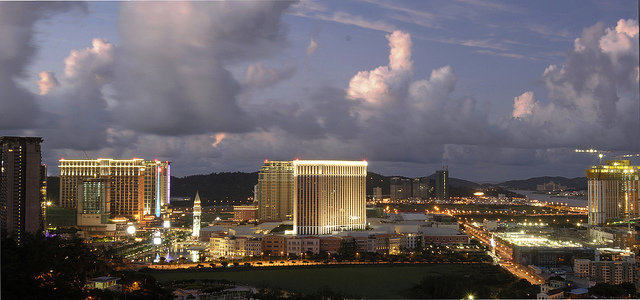Officials from Macau’s Marine And Water Bureau showed a group of journalists around the new Taipa Ferry Terminal yesterday and revealed that the $475.6 million facility is expected to be opened between February and May of next year.
According to a report from broadcaster Teledifusao De Macau, the enclave’s second such facility for travel to and from Hong Kong covers an area the size of 25 standard football pitches and will offer 16 berths for ferries alongside a trio of multi-functional counterparts for other kinds of vessels.
The new seven-story Taipa development is to have government offices and a commercial zone on its first floor alongside a 42-desk departure hall while six helicopter landing areas are to feature on the roof. Four times larger than the initially planned design, the coming facility will moreover have two floors set aside for waiting and check-in areas with authorities declaring that they expect up to 400,000 daily arrivals and departures.
Underneath the Taipa Ferry Terminal is to be a two-story public parking garage while additional space for public transport is being provided in front of the property. The venue will additionally offer 80 arrival and departure immigration checkpoints with each hall having over 20 electronic passages to address possible future congestion.
“The Marine And Water Bureau wishes to spend six to nine months on follow-up arrangements,” read a statement from Chou Chi Tak, Acting Director for the Marine And Water Bureau. “I expect [the opening] to come after February, as I said, these works could be finished within six to nine months before the ferry terminal is open to the public.”
Despite the prospect of the $10.6 billion Hong Kong-Zhuhai-Macau Bridge road project being completed by 2021, the Marine And Water Bureau stated that it is confident the new Macau ferry terminal will see the expected numbers of seaborne passengers.
Once the Taipa Ferry Terminal opens, the Marine And Water Bureau explained that the existing adjacent temporary ferry facility is to be demolished with the plot used to house fire protection and oil pumping equipment.


